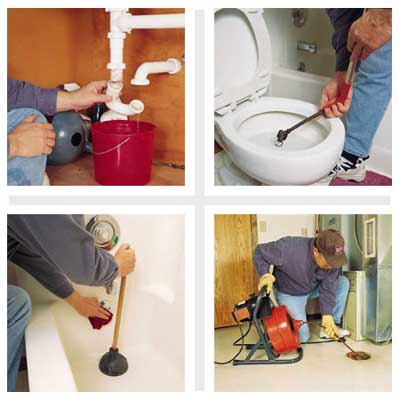Photo: Merle Henkenius
Roto-Rooter reports that that day after Thanksgiving is the single busiest day of the year for their service technicians. Armed with the right tools and techniques, you can easily unplug stopped-up drains without having to call in a pro. All plumbing systems develop clogs—there’s no way to avoid it. We’ll show you how to clear stubborn clogs in a kitchen sink, bathtub, toilet and floor drain. These proven techniques will dislodge virtually any clog. If you can’t clear a clog after a few attempts, make sure you admit defeat and turn the job over to a drain-cleaning service or licensed plumber. Exerting too much force can permanently damage a pipe or fixture.
That said, specialized plumbing tools used to combat clogs are affordable, and they’re available at any hardware store or home center; you can even rent some.
-
The first tool to reach for when trouble arises is a plunger. This plumber’s friend clears clogs from most fixtures, including sinks, tubs and toilets. Every homeowner should keep one handy.
-
To dislodge clogs located farther down the drainpipe, use a cable auger, or plumber’s snake, a long, flexible steel cable wound around a spool that’s fitted with a hand crank. Cable augers are available in lengths up to 100 feet, though a 25-foot model will suffice for most any household clog.
-
A closet auger is specifically made for snaking out toilets. It, too, is equipped with a hand crank, but instead of a spool, the cable is encased in a rigid shaft. The auger end is bent at a precise angle to fit through the tight curves of a toilet trap.
-
For a very large clog or one that’s far from the fixture, rent an electric power auger. This machine—basically a large cable auger powered by an electric motor—is very effective at cutting through virtually any clog, even tangled tree roots. Before bringing home a power auger, be sure the rental agent shows you how to safely dispense and retrieve the cable.
